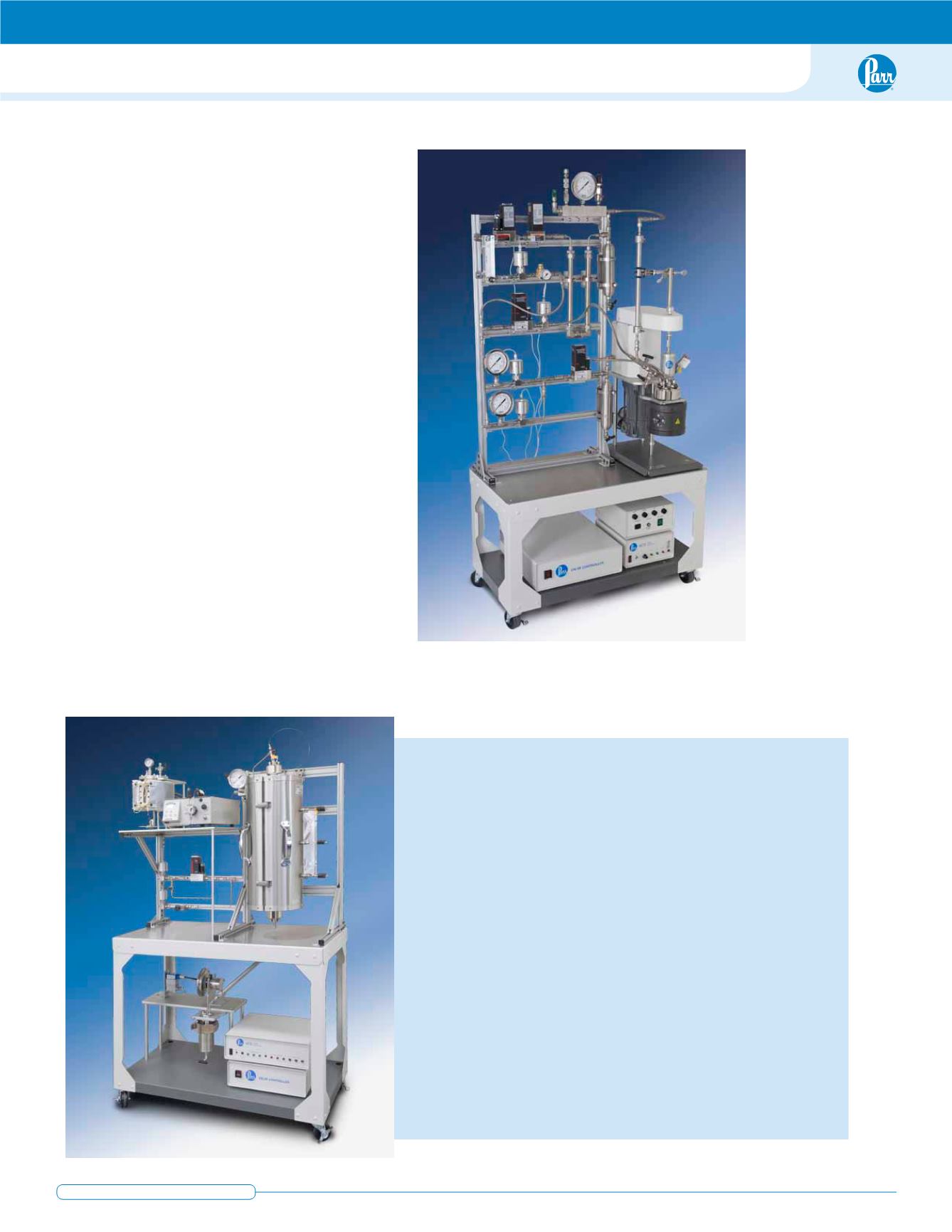
5
B u l l e t i n 5 4 0 0
1 - 8 0 0 - 8 7 2 - 7 7 2 0
T u b u l a r R e a c t o r S y s t e m s
< This 3-zone tubular reactor system is specially equipped for hydrogenating
materials resulting in the following products:
Longer chain alpha and internal olefins (>C6). These materials are used for
the production of alcohols used largely in detergents and plastics for making
polyalphaolefins used in synthetic lubricants and oil field drilling applications.
Long chain (>C9) dicarboxylic acids (diacids) and olefin / carboxylic mono-
mers & derivatives. These materials are used in producing nylon, coatings,
adhesives, greases, polyesters, dyestuffs, detergents, flame retardants, and
fragrances.
Esters for lubricants, surfactants, personal care and other applications. Fatty
esters have diverse applications. They are employed as emulsifiers, emollients
or lubricants in many and diverse industrial applications such as food, per-
sonal care, plastics, synthetic lubricants, metal treatment, pharmaceuticals,
agrochemicals, paints and textiles.
Precursors for these products are generally difficult to pump or otherwise
introduce into a reactor. As a result, this system incorporates both a heated
and pressurized liquid feed reservoir fitted with an oblong high-pressure sight
glass. Additionally, the system comes equipped with a high pressure metering
pump retrofitted with a heated pump head. Provision is also made to heat trace
the transfer lines both to and from the pump.
The system is equipped with a mass flow controller for hydrogen, automated
shut-off valves and on the lower shelf, a gas — liquid product separator. The
head space above the product receiver is connected to an automated back
pressure regulator that maintains the entire system at a user established
working pressure.
This Continuous Flow Stirred Reactor System is on a Cart
with our new Modular Frame System. This modular frame
allows for easy access and flexibility for components in the
feed and product handling systems.
of the reactor, often separated from the reactor
by a cooling condenser. In the separator vessel,
liquids are condensed and collected in the bot-
tom of the vessel. Gases and non-condensed
vapors are allowed to leave the top of the
vessel and pass to the back pressure regulator.
It is important to operate the BPR with a single
fluid phase to prevent oscillation of the reactor
pressure.
The gas/liquid separator can be sized large
enough to act as a liquid product receiver that
can be manually drained periodically. Many of
the non-stirred pressure vessels made by Parr
are ideally suited for use as gas/liquid separa-
tors. Vessels of 300, 600, 1000, or 2000 mL are
commonly chosen.
Control and Data Acquisition Systems
A variety of solutions exist to meet the needs
of system operators. System accessories such
as heaters, mass flow controllers, and pumps
can be obtained with individual control packages
to create a manual, Distributed Control System
(DCS).
As the number of channels to be controlled
increases, economics and convenience will
often dictate that the distributed system of indi-
vidual controllers should be replaced with the
computer-based Model 4871 Process Controller
(PCC). This controller is described in detail on
our web site at
.


